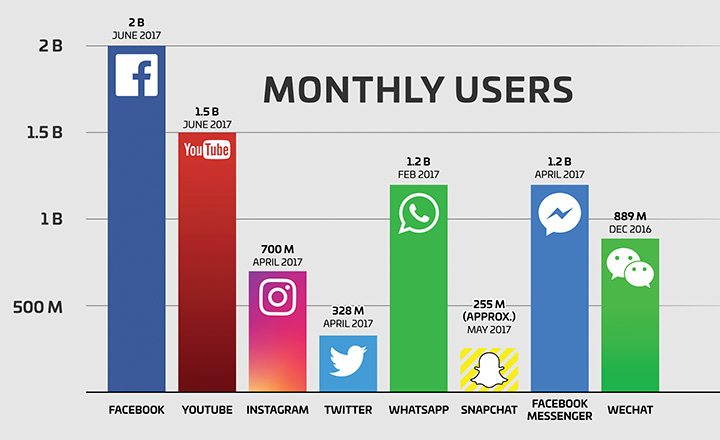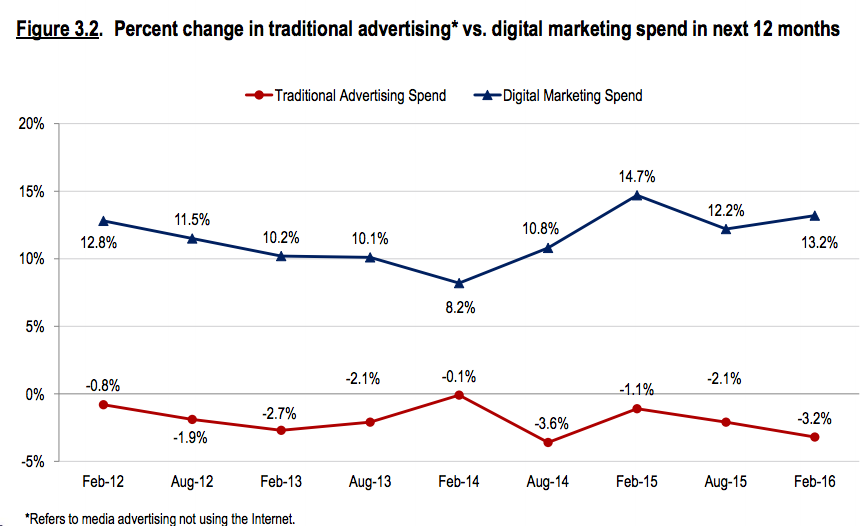Deciding how to plan and spend the annual marketing budget for your boating company can be a daunting task. Especially, with average, annual marketing budgets, across all industries, falling somewhere between 1% and 30% (and up to 50% for new businesses) of sales. Depending on industry, business stage, and objectives, a standardized percentage is not only be hard to come by, but truly might not make sense for your unique situation.
To arrive at a sensible, overall budget for the upcoming year’s marketing and branding activities, it likely makes sense to look at marketing trends both within the boating industry and across other industries as well. What exactly makes up a modern marketing mix? What specific marketing/sales goals do YOU have for YOUR business in the upcoming year? And what has and hasn’t worked in the previous year?
Thinking about and examining the answers to these questions is a great place to begin as you form a more complete picture of what your annual marketing plan and budget should look like. And once you’ve set an overall budget for your marketing, you can make decisions about how you’ll apply it.
One of the key decisions you’ll have to consider when planning your marketing for the year is how much of your budget to allocate toward overall branding, traditional marketing, and digital marketing.
What Do We Mean by Digital and Traditional Marketing?
For our purposes, we’ll consider your traditional marketing avenues to include elements such as print advertising, direct mail, brochures, and collateral development: all of your branding and marketing that takes place “offline.”
Conversely, the digital portion of your marketing budget will be spent on elements that do take place “online.” Examples of your digital marketing efforts would include your website, social media channels, online content strategy, search engine optimization, and paid, online advertising.
Another more modern way to think about the difference between traditional and digital marketing is aligning traditional marketing with the term “push marketing” and digital with “pull marketing.” (In fact, we recently wrote an article about those terms specifically.) While digital marketing “pulls” your audience to you through the promotion of value-based content, social media communications, and your website, traditional advertising like print ads or radio/TV commercials “push” content or advertisements to your audience.
How Boat Companies Leverage Traditional Marketing
Even though there has been a shift in overall marketing trends in the boating industry toward the digital space, traditional marketing is still crucial within your marketing budget. It has been the tried-and-true method in marketing for decades, and only recently has there been a greater shift in where the attention (the eyes, ears, and actions) of consumers lies. As far as marketing is concerned, most of the channels and avenues of traditional marketing are well established.
As a boating company, you already know where your potential buyers go when they are looking to make a purchase. You know which magazines and publications are best suited for your advertisements, which TV channels to run commercials on, and what time slot to place your ads to garner the most leads. You have a strategy for deciding when to release and announce new models and where to place your booth (and boats) to get the most traffic at shows. By and large, traditional marketing has proven the easiest and least risky way to spend your marketing dollars.
Savvy companies and marketers have found ways to use both traditional and digital marketing together. Many are using their traditional marketing material (brochures, billboards, ads/commercials) to point back to their digital content, allowing for both disciplines to be most effective.
A Shift Toward Digital Marketing
The importance of your overall branding and strategic traditional
marketing efforts cannot be discounted (imagine going to a trade show
without having produced collateral to hand out). However, in most
industries – and the boating industry is no exception – there has been a
shifting tide.
Over the last several years, digital marketing spending has been on the rise, while budgets for traditional marketing have been shrinking. In a report from CMO Survey, we find that ad spending in the digital space has increased every year since 2012 and looks to continue gaining momentum over the next few years. During the same period, traditional marketing spends have continued to trend downward.
In Boating Industry’s article, “2018 Digital Marketing Guide2018 Digital Marketing Guide,” Tim Hennagir refers to a survey that was conducted in which they asked boat dealers, service providers, and manufacturers about their 2017 marketing plans. Their answers showed an increased and focused reliance on the digital side of marketing. The article also showed Facebook’s marketing significance, with 64% of Boating Industry readers stating that they intended to use the social media platform more than they had previously.
Meeting Customers Where They Are
If you’re looking to attract the attention of customers where they are, you have to focus on two areas: mobile (web) and social media. It’s where they spend a lot of time. In fact, the average person spends more than three hours per day on their phone. Whether they’re checking up on their friends on social media, consuming video and audio content, doing research, or looking for their next boat, your customers are likely focusing their attention in one of these two places.
In June of last year, TechCrunch published a graph showing how many monthly users the most popular social platforms received (Facebook being chief among them).
In Boating Industry’s “State of the Industry” report, their findings show potential boat buyers are coming by way of digital more and more.
How Boat Companies Are Using Digital Marketing
Digital marketing has transformed how you, as a marketer in the boating industry, engage your customers. It allows you to reach a larger audience more quickly than you could in the past. With social media, your content can be discovered by people who might have never seen it otherwise. Through social sharing, liking, tweeting and retweeting, of any number of your posts, your content can also impact potential customers long after it has been created.
In an effective modern marketing ecosystem, all of your online and offline marketing efforts serve to drive boaters and enthusiasts to your brand’s website. Here is where you truly have a captive audience, and can tell your brand’s complete story and educate your prospects about your product and service lines.
ROI Tracking and Flexible Campaigns
Digital has a clear advantage over traditional marketing means in the tracking and quantification department. Truly, just about anything you do within your digital marketing’s sphere can be measured and compared with previous results. From finding out the number of visitors to a specific product page on your website, to seeing how many “likes” your latest Instagram post generated – everything can be quantified.
When it comes to traditional marketing, it can be more difficult to quantify effectiveness, such as how many customers called you after seeing your billboard. It can be nearly impossible to calculate the impact that a billboard purchase or magazine ad directly has on your business and even more difficult to truly measure ROI.
The ability to instantly measure results of your digital campaigns and activity allows for greater flexibility in your marketing program. If you see that content to announce a new model gets shared and has more traction on Instagram and YouTube over Facebook and Twitter, you can adjust your ad budget accordingly. You can also spend more time creating content catered to Instagram and YouTube, allowing you to better allocate resources for future spends.
Digital Increases Consumer Engagement and Builds Trust
Companies like yours in the boating industry can also use consumer behavior to create content that gives your audience more value. Seeing their comments and suggestions on your posts can help you target pain points of theirs and help you mold your messaging. Customizing your marketing message in such a way can have a big impact
and helps you build trust with your customers, as it shows you are
listening to their needs and concerns. Tracking the data from these newer levels of engagement can also show how, when, and where an individual moves from prospect to purchaser, and from purchaser to returning buyer (or better yet, a fan for life).
The Shift Toward Digital and Its Reward
If you want to reach more people, generate better leads, and gain more customers, you’ve got to get your content to where they can see it. For the last several years, people’s attention has been increasingly re-allocated toward digital consumption of content as opposed to traditional means of consumption. As a reaction to that shift in attention, smart companies have geared their marketing spends accordingly – towards digital.
To see growth in your business and revenue, you’ll need to consider the same approach. The good news is, you no longer solely have to go to the consumer; you can now let them come to you!

